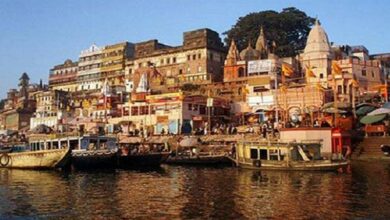4 years into the standoff, China is still building up the LAC and displaying the most recent satellite photos
NEW DELHI: After four years of direct military confrontation in eastern Ladakh, which also caused tensions along the Line of Actual Control, China has not stopped constructing border infrastructure, constructing dual-use “Xiaokang” villages, fortifying military positions, and increasing the number of aircraft at its air bases that face India.

According to individuals in the military and security establishment who spoke to TOI, the most recent satellite images, intelligence reports, and other inputs demonstrate this continuous Chinese activity in all three sectors of the 3,488-km Ladakh–Arunachal Pradesh Line.
According to a source, the People’s Liberation Army (PLA) is actively strengthening its military positions and supporting infrastructure along the Ladakh–Aksum Chain (LAC) in a number of staging and depth regions, particularly close to the buffer zones established after army disengagements in eastern Ladakh.
For example, China just finished building a road that connects the north of Samzungling to the Galwan Valley, giving the PLA a 15-kilometer detour axis to quickly increase military concentration in the region.
Three weeks after the horrific confrontation in the Galwan Valley on June 15, 2020, which resulted in the deaths of twenty Indian soldiers and an indeterminate number of Chinese soldiers, a no-patrol buffer zone was established around Patrolling Point 14.
According to sources, the PLA has also been gradually bolstering its military and transportation capabilities behind the other buffer zones on both banks of the Pangong Tso, such as the Kailash range and Gogra-Hot Springs, which are mostly located in regions that India claims as its own.
The PLA has also been building additional bunkers, camps, underground shelters, artillery positions, radar sites, and ammunition depots in other parts of the LAC, with an emphasis on last-mile connection via roads, bridges, tunnels, and helipads to its front positions. “The eastern sector, encompassing Tawang in Arunachal Pradesh and Naku La in north Sikkim, is notably witnessing an upsurge in PLA activity,” another source said.
Naturally, India still matches the PLA in “mirror military deployments,” and as previously reported by TOI, it has significantly increased infrastructure and capability development along the border.
China has also improved its airfields at Hotan, Kashgar, Gargunsa, Shigatse, Bangda, Nyingchi, and Hoping, among others, with new and extended runways, reinforced shelters, and facilities for storing fuel and ammunition. This has helped to partially offset China’s air combat disadvantage caused by high-altitude terrain constraints. China has also deployed additional fighters, bombers, reconnaissance aircraft, and drones.
Recent reports, for example, indicate that three Y-20 heavy-lift aircraft and two new JH-7A fighter-bombers have been deployed to Hotan in Xinjiang. These aircraft join the nearly fifty J-11 and J-7 fighters, five Y-8 and Y-7 transport aircraft, and KJ-500 AEW&C (airborne early-warning and control) aircraft that are already stationed there.
According to sources, in order to support PLA positions and assert territorial claims, new Chinese dual-use “Xiaokang” border towns are routinely constructed and existing ones are “populated” along the disputed sections of the LAC, particularly in the eastern sector.
As previously reported by TOI, China has been constructing as many as 628 border defense villages in an effort to strengthen the boundaries of the Tibetan Autonomous Region with Bhutan and India in recent years.
“This indicates that the PLA will persist in stationing troops in forward locations along the LAC, even in the event of a disengagement at the two major face-off sites in eastern Ladakh, Depsang and Demchok,” the source said.
The PLA’s well-planned numerous assaults into eastern Ladakh originally took India off surprise. On May 5–6, 2020, the first major combat broke out on the north bank of Pangong Tso, injuring scores of Indian and Chinese troops.
After four years, there are now 90,000 soldiers in the eastern sector (Sikkim, Arunachal) and 50,000–60,000 PLA forces with heavy armament are stationed in the western (Ladakh) and central (Uttarakhand, Himachal) sectors.







